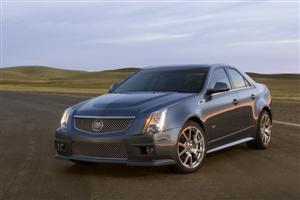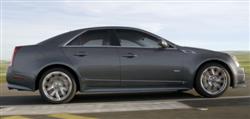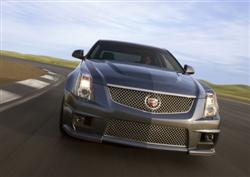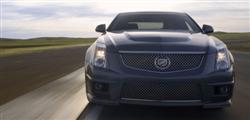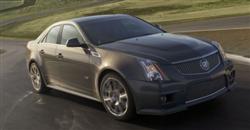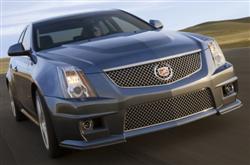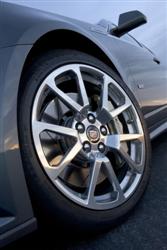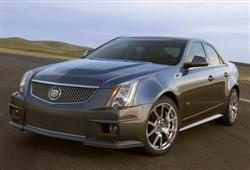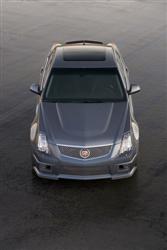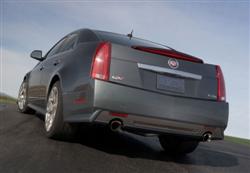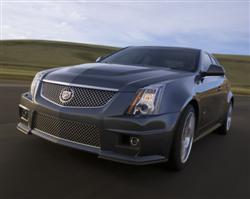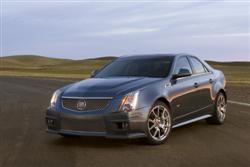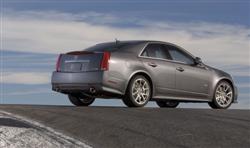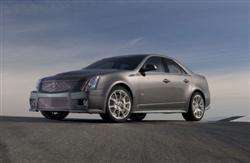The new, four-lobe rotor design of the sixth-generation Eaton supercharger also contributes significantly to the LSA’s quiet performance. In fact, the quiet operation of the supercharger system fooled several onlookers during the CTS-V’s development – onlookers who were convinced that a prototype running at wide-open throttle on Germany’s famed Nürburgring racing circuit couldn’t possibly have a supercharger because there was no audible sound from the drive system.
“The characteristic whine of the supercharger is drastically reduced because of the LSA’s four-lobe rotor design,” said Meegan. “And with the other noise-reduction features used throughout, the sound is virtually eliminated.”
The new TR6060 transmission is based on the proven T56 six-speed used in the previous CTS-V, but upgraded to handle the LSA engine’s substantial increase in torque, as well as improve shift quality, via a dual-disc clutch system.
The twin-disc clutch delivers exceptional clamping power and excellent shift effort, achieved with the use of a pair of smaller-diameter clutch discs that have less inertia than a single, larger-diameter disc. Like the previous CTS-V, a dual-mass flywheel is used, which allows for smooth, chatter-free performance.
When it comes to the new automatic transmission, GM’s Hydra-Matic 6L90 six-speed automatic transmission features steering-wheel- and console-shifter-activated tap up/tap down gear control, as well as driver-selectable modes that deliver different performance characteristics, i.e. shift points, shift firmness, for different driving conditions. Performance Algorithm Shifting is part of the 6L90’s controller programming and provides a performance-oriented shift pattern during sustained high-performance driving, such as at a racetrack.
A twin-plate torque converter clutch is used with the 6L90 transmission to match the torque output of the LSA engine – the first twin-plate configuration used with GM’s 300-mm torque converter. Like the dual-disc clutch of the six-speed manual transmission, the twin-plate converter clutch provides exceptional clamping power.
New, Performance Traction Management technology works with the CTS-V’s engine and transmissions to optimize traction and maximize the performance driving experience.
Specifications
DETROIT – At first glance, the new 2009 CTS-V presents a dramatic design statement that is supported by an estimated 550 horsepower (410 kW) – landmark power for a Cadillac. Behind that distinctive styling and exemplary engine output lies a comprehensive suite of highly developed, advanced technologies aimed at delivering elite luxury and performance driving.
“CTS-V’s mission is to attract the most discerning and enthusiastic luxury and performance car consumers,” said Jim Taylor, Cadillac general manager. “That requires a comprehensively excellent car, one that looks and performs like a top-level sports car but has the poise and elegance of a prestigious luxury sedan.”
Technologies including Magnetic Ride Control, a racing-inspired Performance Traction Management program and an advanced Brembo braking system combine to make CTS-V a sophisticated, high-performance car. The development team, building off of the acclaimed CTS sedan and previous-generation V-Series cars, tirelessly fine-tuned the car on some of the world’s most demanding and legendary environments, including Germany’s famed Nürburgring, and roads and tracks throughout the United States and Europe.
World’s fastest-reacting suspension
The revised CTS-V chassis features the world’s fastest-reacting suspension, Magnetic Ride Control. It uses shocks controlled by electro-magnets, rather than mechanical valves. Tiny iron particles suspended in fluid fill the shock damper. Under the presence of a magnetic charge, these particles align in tight formations to provide more damping resistance with incredible speed.
The elimination of mechanical valves greatly accelerates response, given that magnetic charges are virtually instantaneous. A network of sensors literally “reads the road” every millisecond and feeds that data to an on-board computer. When more damping force is needed, more electric charges are sent, enabling the system to make constant damping adjustments to all four corners of the car. The result is extremely precise control of body motions and maximum tire-to-ground traction – particular ly important in keeping the car (and the driver) very composed during hard cornering, acceleration, braking or other dynamic maneuvers.
The Magnetic Ride shocks also enable a much broader range of damping control to optimize the ride and handling for all driving conditions. In the CTS-V, Cadillac provides an extra measure of control, as Magnetic Ride has two selectable modes (Tour and Sport) enabling the driver to tailor the suspension for grand touring or more spirited performance driving.
Magnetic Ride Control is a GM-pioneered technology that, following years of research, appears only on handful of the industry’s most elite cars. The magneto-rheological science inside the dampers is also applied to medical devices such as prosthetic limbs.
Precise power and control
A car as potent as the CTS-V demands a robust series of technologies to apply its power precisely. It’s much the same challenge faced in championship motor sports, so that’s where Cadillac turned for technical assistance. CTS-V will feature a new Performance Traction Management system that is borrowed from the CTS-V racecar that won two of the last four Manufacturer’s Championships in the SPEED World Challenge GT racing series.
Performance Traction Management ensures that engine torque is instantly matched to the allowable tire traction to enable maximum acceleration. In a situation such as a corner exit, this new technology allows the driver to maintain throttle pressure without losing traction. Performance Traction Management, using electronic controls, directs torque to maximize acceleration and traction in conditions, such as hard acceleration when more power is commanded by the driver. Where stability controls tend to manage wheel slip in an effort to slow or steer the car, Performance Traction Management regulates torque delivery to enhance acceleration and provide an optimized launch. The system maximizes acceleration by instantly matching torque to the available tire traction.
CTS-V also manages power via an extremely robust driveline. The car’s limited-slip differential is made of cast iron for extreme strength. Its limited-slip tuning enables excellent high-speed stability along with comfortable low-speed maneuverability. The prop shaft is heavy-duty and wheel hub bearings are stiffened and bolstered to manage the car’s remarkable energy. Axle half-shafts are asymmetrical, a design that ensures smooth performance.
Cadillac turned to Brembo, a company that forged its reputation in Formula One racing, for CTS-V’s extremely capable braking system. The car features six-piston calipers in front and four-piston calipers in the rear, delivering impressive stopping power. Slotted and vented rotors enable strong initial braking force while optimizing heat resistance and eliminating fade. CTS-V also includes an electric parking brake for the first time, enabling more legroom for the driver, key for high-performance driving.
CTS-V rides on a specially developed quartet Michelin’s PS2 summer-only tires.


